I want to implement Asynchronously loading CSS files for faster performance. However I want security too, so I want my site to have CSP.
<link rel="stylesheet" media="print" class="AOcssLoad" .... onload="this.onload=null;this.media='all';" />
Without going into details it wants me to avoid things like onload and many other JS that are part of elements.
I want it to look like this
<link rel="stylesheet" media="print" class="AOcssLoad" href="" />
Please suggest a way to achieve Asynchronous CSS files without inline JS as used above.
We can use inline <script> tags or seperate JS files.
I tried the below code as an inline JS.. Below is the HTML for the JS,
<script nonce="" type="text/javascript" data-exclude="true">
var Script = document.getElementsByClassName("AOcssLoad");
for (var i = 0 ; i < Script.length; i++) {
this.className += " Loading";
Script[i].addEventListener("load", function({
this.onload=null;this.media="all";
this.className += " OnLoad";
});
}
</script>
While it works, it's highly unreliable.
I cannot comprehend the problem, but I shall say it works only 50% of the times, sometimes just reloading the page can solve/break the problem, with no apparent change to css/html/cache as such.
Please help me improve on this, or build a better approach for it.
Edit:
As Suggested in Comments I tried different methods, including the links to other resources from GitHub.
Those methods are unreliable I would say they work less than 50% of times.
However I tried to use jQuery(document).ready() and add media="all" to all the css files, but that increases TBT (Total Blocking Time) thus impacting my site performance
Edit 2:
As many of you are repeatedly pointing out in answers, using DOMcontentLoaded and many other ways can help in doing what I want to implemnt.
However these approaches all contribute to significant increase in TBT (Total Blocking Time).
An approach that doesn't harm the TBT would be appreciated.

